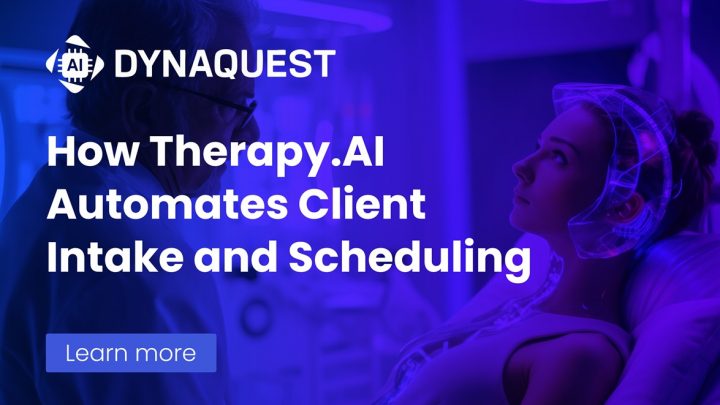From First Message to First Session: How TherapyQuest.AI Automates Client Intake and Scheduling
The First Barrier to Mental Health Isn’t Emotional—It’s Logistical When someone reaches out to a therapist for the first time, they’re not just contacting a professional—they’re making a courageous first step toward healing. Yet for many solo practitioners, the path from that first message to a booked session is lined with delays, scheduling confusion, and missed connections. The truth? Clients often abandon therapy not because of stigma or cost—but because they never hear back. For solo therapists managing their entire practice—sessions, billing, admin, and intake—being responsive 24/7 isn’t realistic. But to a prospective client in distress, silence feels like rejection. That’s where Therapy.AI steps in: a purpose-built AI assistant designed to bridge the gap between client outreach and the first booked session, providing empathy-driven automation that works for both provider and patient. The Hidden Drop-Off Problem in Mental Health Intake The initial outreach is often the most vulnerable part of the therapeutic process. Yet, an estimated 38–42% of therapy inquiries are never followed up on—either because the provider missed them, or the client lost interest after not receiving a timely response.¹ Common roadblocks include: These breakdowns result in fewer bookings, lower access to care, and emotional disengagement from clients who may already be feeling overwhelmed or rejected. Solo practitioners—despite their commitment and compassion—often can’t keep up. And that’s where AI-powered support becomes a game-changer. The Emotional Cost of Administrative Delay In most industries, a slow reply is an inconvenience. In mental health, it can feel like abandonment. Imagine a client experiencing high anxiety or depression finally mustering the courage to reach out, only to hear: “Leave a message after the beep.” Even with the best intentions, solo therapists frequently find themselves: Responding late at night after hours of back-to-back sessions Losing potential clients while playing email tag for scheduling Overwhelmed by unread messages and incomplete intake forms This leads to provider burnout, guilt, and a loss of trust before the therapeutic relationship even begins. Therapy.AI solves this by delivering real-time responsiveness with emotional intelligence, so clients feel heard—even before you’re available. What Therapy.AI Does (And What It Replaces) Therapy.AI isn’t a generic chatbot. It’s a secure, conversational AI designed specifically for mental health practices. Core functions include: What it replaces: In short, it offers a seamless, emotionally attuned experience that mirrors the professionalism and care you bring to your sessions—without adding admin work. Without AI vs. With Therapy.AI Touchpoint Without Therapy.AI With Therapy.AI Response to First Inquiry 6–48 hours or missed entirely Instant, 24/7 conversational reply Intake Form Delivery Manual email or PDF Smart, mobile-first form Scheduling Email/phone back-and-forth Real-time, self-booked calendar slot No-Shows 20–30% Reduced with AI-driven reminders This isn’t about replacing human care—it’s about ensuring the care starts as soon as the client reaches out. Always On, Always Human-Centered Therapy.AI doesn’t just respond quickly—it responds compassionately. Its conversational design is rooted in principles of: It can be customized to match your tone—whether you prefer gentle and warm, or direct and professional. It can explain your availability, your approach, and guide clients through the intake process without clinical coldness. This creates continuity of care from the very first message, ensuring clients feel safe before they ever step into session. Omnichannel Engagement: Voice, Text, Web Chat Today’s therapy clients reach out in many ways: a call after work, a late-night message on your website, or a text while on the go. Therapy.AI meets them where they are: All communication is synced into a single, secure dashboard, so you can view the full client history and respond as needed, when you’re ready. For clients, this omnichannel flexibility reduces barriers. For providers, it reduces stress and preserves context. Case Study: How a Solo Therapist Reduced Intake Drop-Off by 60% The challenge: The solution: Results in 90 days: “Clients now tell me they felt cared for—even before meeting me. It’s changed the energy of how we begin.” — Lisa M., LMFT Intake That’s Automatic—Not Impersonal For many clients, completing an intake form is the first act of trust. But clunky PDFs, unclear instructions, or delayed responses often discourage follow-through. Therapy.AI streamlines this experience by: Sending mobile-friendly, guided intake forms immediately after initial contact Asking relevant, trauma-sensitive questions tailored to your niche Auto-reminding clients if they don’t complete the form within a set timeframe The process feels conversational—not clinical—because it’s built with mental health in mind, not repurposed from another industry. And all data syncs to your existing system—whether you’re using SimplePractice, TherapyNotes, or Jane. Scheduling with Zero Email Ping-Pong No more endless messages to align on a day and time. With Therapy.AI, once a client completes intake, they’re instantly directed to your real-time calendar to book their first session. How it works: This means clients can book when they’re most ready—at 10 a.m. or 10 p.m.—without needing to wait for a reply. You stay in control, and they stay engaged. Time Saved in Admin Tasks (Monthly) Task Manual Time Spent With Therapy.AI Intake Follow-Up Emails 4–6 hours < 1 hour First Session Scheduling 3–5 hours Automated Form Chasing & Reminders 2–3 hours Automated With this time reclaimed, therapists can focus on what matters most: the clinical relationship, not the inbox. Reduced No-Shows with Smart Reminders No-shows can be emotionally and financially draining, especially for solo therapists. Therapy.AI helps by: This simple step dramatically reduces friction and builds routine accountability for the client. On average, therapists using Therapy.AI report a 30–50% drop in first-session no-shows, making the intake process not just easier—but more effective. HIPAA-Compliant and Client-Safe by Design Privacy is not optional—it’s sacred in mental health. Therapy.AI was built with compliance and confidentiality at the core. Key privacy and security features: Clients are clearly informed when they’re interacting with an AI assistant, and no personal health data is stored without explicit permission. Easy Setup, No Tech Team Required You don’t need to be tech-savvy to use Therapy.AI. It’s built for independent therapists and small practices, not enterprises. Setup includes: Most providers are up and running in under 48 hours, with zero disruption…






